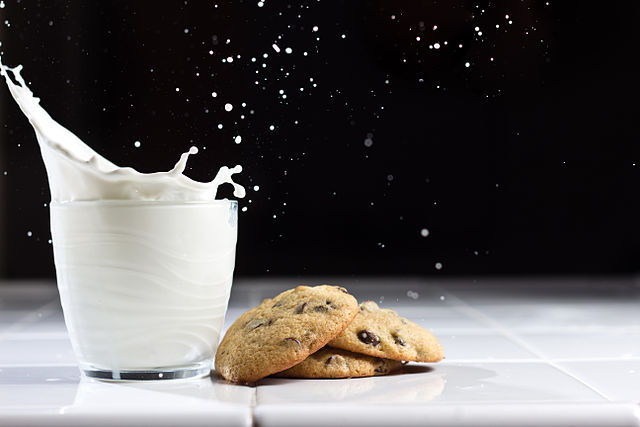In an oft-quoted passage of Pinker’s How the Mind Works, we are informed that:—
‘[W]e enjoy strawberry cheesecake […] not because we evolved a taste for it. We evolved circuits that gave us trickles of enjoyment from the sweet taste of ripe fruit, the creamy mouth feel of fats and oils from nuts and meat, and the coolness of fresh water. Cheesecake packs a sensual wallop unlike anything in the natural world because it is a brew of megadoses of agreeable stimuli which we concocted for the express purpose of pressing our pleasure buttons’.
Long buried in the depths of my mind, Pinker’s statement tends to make a yearly, festive re-appearance every Christmas season. In keeping with the nature of his statement, I’ve long wondered what exactly makes cookies (and milk) such an alluring Christmas treat for most. The question is to be separated from its American historical context: sure, the tradition of cookies & milk may have begun as a relatively inexpensive Great-Depression-Era practice; but why exactly do we savour it? If Pinker’s quote has anything to offer, it’s this: cookies press our pleasure buttons. How so, I hear you ask? Well, the answer’s rather simple.
It begins with a widely-appreciated human fact: we love sugar. And why do we love sugar? The reason – simply put – is twofold: (i) dopamine, and; (ii) glucose. The former famously endues us with insatiable pleasure and satisfaction; and, once coupled with the plentiful energy supplied by the latter, we are supplied with a yummy source for survival. Our brian has evolved a liking for sugar and all things sweet, because, in addition to pressing our ‘pleasure buttons’, they serve as a great source of energy to keep us going. But the answer isn’t merely reducible to some sort of Darwinian survivalism. In a recent article by Serge Ahmed et al. (published in Current Opinion in Clinical and Metabolic Care), the authors likened ‘hyperpalatable’ foods (e.g., cookies, burgers, brownies) to the introduction of ‘injectable synthetic drugs at the end of the 19th century’, for both have a capacity to change brain activity via the stimulation of sweet taste cells in the mouth and glucose signaling. These reactions between neurotransmitters and receptors allow us to experience highly addictive reward-like and stress-alleviating sensations. They also produce advantageous effects on decision-making and self-control – indeed, embedded socially useful advantages. The analogy remains imperfect: of course, foods are nowhere near as psychologically toxic as cocaine or heroin.
These things, however, are very general – that is, they may apply to all sugary foods. Now, whilst it may be complex to hone down what exactly separates cookies from other sugary, hyperpalatable foods at the ingredient-level, it nevertheless remains that the fat, texture, flavour, and smell combinations peculiar to the cookie distinguishes it from its festive counterparts. The pleasant molecules that carry the smell of cookies, for one, are indubitably going to trigger a certain craving (in part linked to the foregoing); a craving that bears a great effect on our perception of the food. And, if properly baked, the subtle contrast in textures between the crispy edge and the progressively cushiony middle is one that we are bound to find objectively appealing: we get the best of both worlds! Lastly, the fat content not only enhances flavour by providing moisture, tenderness, and richness, it also – once broken down into fatty acids and glycerols via lipolysis – serves as a pertinent source of energy; a source which we’ve already found to be inherently addictive.
So there’s your answer… short & sweet, just like Santa’s favourite treat.






